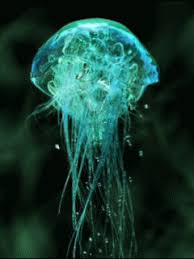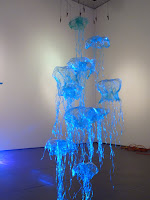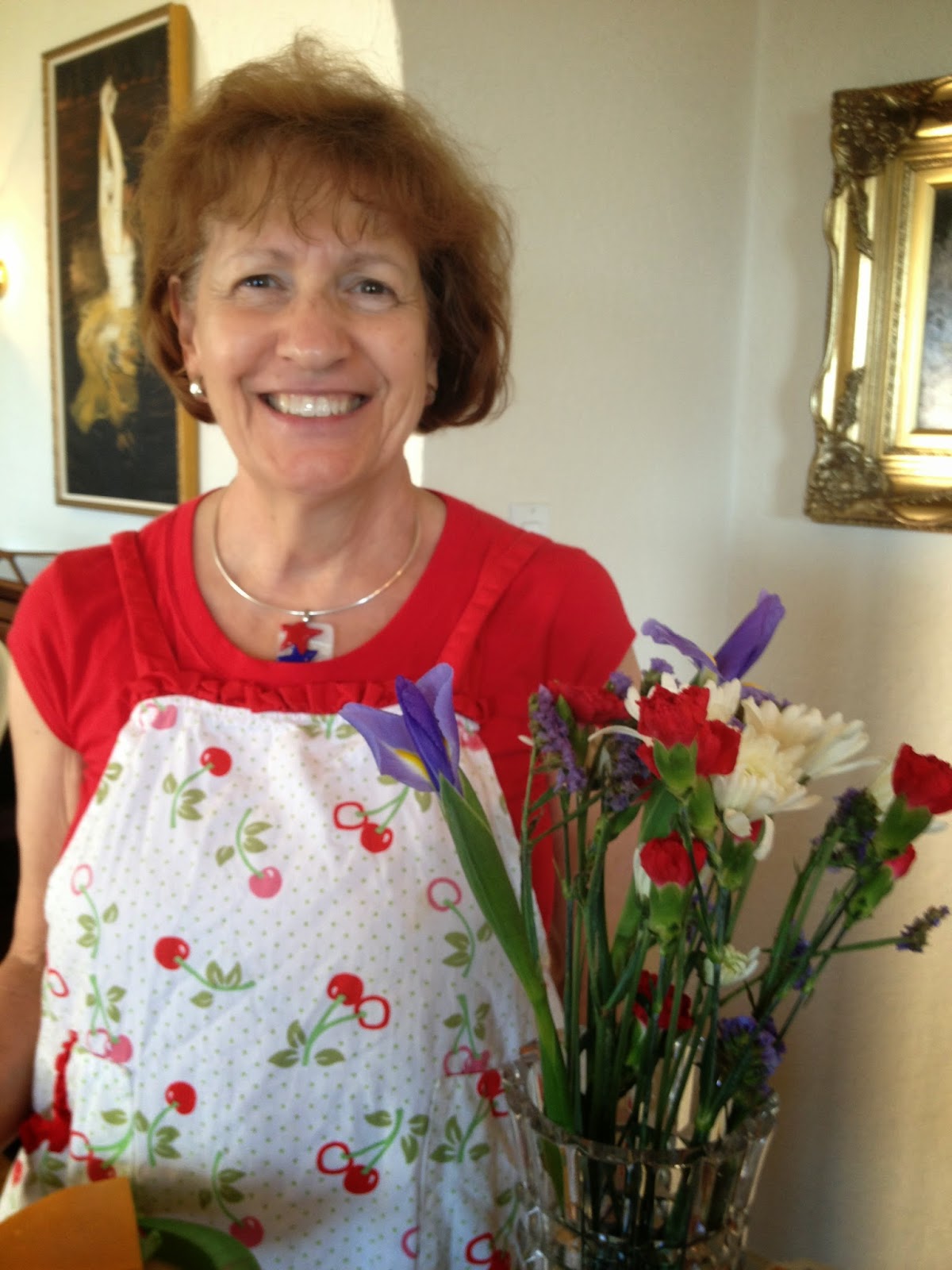IN the summer of 2012 I was invited to join a project called the
"DNA of Creativity"
 The project came from the brilliant & creative mind of San Diego Visual Arts Networks Founder Patricia Frischer. Ms. Frischer is
dedicated to growing the arts community & creating collaborations with
local business & science. The goal of the "DNA" project is to encourage collaborations between the arts and sciences, and to instigate
innovative research
and create positive change. For me part of the project was also documenting its process.
The team I was invited to join "Sea Changes: ACT!, is
one of four teams, consisting of artists and scientists. Their goal is to raise awareness for issues affecting our ecosystem, particularly our Oceans. Over fishing, plastic pollution, climate change and acidification.
The project came from the brilliant & creative mind of San Diego Visual Arts Networks Founder Patricia Frischer. Ms. Frischer is
dedicated to growing the arts community & creating collaborations with
local business & science. The goal of the "DNA" project is to encourage collaborations between the arts and sciences, and to instigate
innovative research
and create positive change. For me part of the project was also documenting its process.
The team I was invited to join "Sea Changes: ACT!, is
one of four teams, consisting of artists and scientists. Their goal is to raise awareness for issues affecting our ecosystem, particularly our Oceans. Over fishing, plastic pollution, climate change and acidification.
 |
| Ireland (32,595 sq mi) |
Coming from a small island country like Ireland, you are always aware of the ocean. It's part of everything. it's in the blood! The island itself is a bit smaller than the state of Indiana, and it's only 1 hour and 27 minutes drive from the center-most point of the country, near Athlone, County Roscommon to the coast at Blackrock, Dublin.
In an article I read in the NYTIMES about
Ireland's PlasTAX they say "Plastic bags were not outlawed, but carrying them became socially unacceptable". Introduced on 4th March 2002, according to the
Department of the Environment the law had an immediate effect on consumer behaviour with a decrease in
plastic bag usage from an estimated 328 bags per capita to 21 bags per
capita overnight! I'd love to see this happen everywhere. But of course it won't happen until we change something and I want to be part of changing something.

So I was delighted to say yes and take a deep dive into helping to bring awareness to the plight of our oceans. I believe artists can help create a paradigm shift in how people think. We have the ability to help people see something in a new way. I hope to bring a sense of connection with this project, to help people remember they are part of the great circle of life. That small actions repeated many times have an impact, that impact can be for our good or for our detriment.We have the ability to choose. I want to encourage people to make the effort.
Marjorie had been working on large scale silk paintings
with Kira Corser, our Sea Changes team leader. Kira is also a multi faceted artists and produced beautiful hand painted silks, photographs as well as a video for the project.

Jellyfish are truly beautiful, ethereal almost magical looking creatures. Translucent as glass & every color of the rainbow. With frills and long tentacles and sometimes pulsating lights. These beautiful creatures en-captured our hearts, and artistic vision.
We discovered that juvenile sea turtles are carnivorous and survive on jellyfish. However they are ingesting increasing amounts of plastic in their diet.
 |
| Green Jelly |
We discovered that on
Midway Atoll, 2000 miles from the nearest continent, the albatross feeds its chicks plastic bottle tops, razors and garbage bags until it dies of malnutrition.
How much more do we need to see before we stop what we're doing?
We discovered there is a larger than normal bloom of jellies happening in our oceans.
Scientists are wondering "Why is this?"
There
is an indication that their spread is human-based, although some
scientists have
argued that the blooms are part of a natural cycle. If the blooms are
human-caused, there are several probable culprits... including
overfishing, extra nutrients from fertilizer run offs, climate change
& ocean sprawl.

My mind started working on how it might be achieved. The first idea I came up with was using a wire frame with silk over it. then airbrushing with color. This idea was discarded for a few reasons, 1, Silk is expensive, 2, Silk is not clogging up the ocean. 3. This would involve a lot of sewing and the biggest issue for me was 4. it is not translucent enough.

 |
| The first Jelly! |
The next idea was to use a couple of mosquito nets I had hanging around the studio. The netting is more translucent than the silk, and seemed like it would communicate the idea of jellyfish better.
At 3am one morning while I was working in the studio I remembered the beautiful green jellies I had seen online that day. My mind immediately went to the large roll of green cling wrap my friend Jeff Mills had donated to a previous project. The connection came in a literal
flash and I instantly felt it's perfection. It communicated aspects of the
project the silk could not. I felt this was an elegant solution of which
any scientist would be proud.
  |
| Some of the first Jellies |
I sat in my studio and worked on a sample to show Marjorie the next day. I wasn't sure what her reaction would be! I waited all day for her to stop by after work. I had the green jelly sample and the big roll of green plastic out on the table... and the pictures of the "green jellies" ready.
I didn't need them! Marjorie was as delighted with the idea!
I decided to do the tentacles, by spiral cutting plastic bags to create really long wavy pieces. To get the plastic to hug the frames I utilized another item donated to the studio by our friend Jeff. A heat gun! It was perfect for forming the body around the wire frame. The bodies are airbrushed to add color. Marjorie used all kinds of cutting techniques to create the miles and miles of tentacles we needed.

 I was greatly inspired by Alexander Semenov's photographs of the majestic lion's mane captured
in the crystal clear waters of the White Sea. With caps as large as 8 feet in diameter and tentacles
reaching 130 feet long, the idea of creating this magnificent beast
captured my imagination. I also referenced his photos for color and anatomy.
I was greatly inspired by Alexander Semenov's photographs of the majestic lion's mane captured
in the crystal clear waters of the White Sea. With caps as large as 8 feet in diameter and tentacles
reaching 130 feet long, the idea of creating this magnificent beast
captured my imagination. I also referenced his photos for color and anatomy.

Initially we worked to create large
"smacks" of jellyfish for the Museum of Monterey & Oceanside Museum of Art in California. Since then we have been hosted at The Carter Center, The Monterey Convention Center, The Monterey Bay Sanctuary Exploration center (on permanent exhibition), The Living Coast Discovery Center.
 The jellies were made using
donated plastic painters tarps, grocery bags and salvaged plastic wrap. I created hundreds or wire body frames, and added a recycled plastic body and Marjorie cut literally thousands of feet of jelly tentacles from grocery bags, old vhs tapes and painters tarps!
The jellies were made using
donated plastic painters tarps, grocery bags and salvaged plastic wrap. I created hundreds or wire body frames, and added a recycled plastic body and Marjorie cut literally thousands of feet of jelly tentacles from grocery bags, old vhs tapes and painters tarps!
Our intent is to bring a visual aid to the scientific research.
It is pitiful to see the ever increasing number of juvenile sea turtles
dying because they ingest plastics. The juvenile sea turtles eat
jellies until they reach maturity at age 4 years. At which time they
become herbivorous.
Many of these photos were taken during the
installation process in the Museum of Monterey between March 6th 2014 and March 8th 2014. We drove
up the coast on a mini adventure that turned out to be epic.
Kira Corser our team leader was a joy to live and work with. Her
motivation to do good comes from deep within and is born of the trials
and tribulations of a life that would have knocked some of us to the
ground. But not Kira. She took it all as a challenge and forged ahead
with a heart full of love for humanity and a dedication to leaving this
planet a better place. Her knowledge and experience were our guide on
this adventure and we couldn't have asked for a better mentor. Thank
you KIRA for your beautiful big and loving heart, and for your wisdom ♥
 & to my team mate Marjorie Pezzoli for her motivation, her dedication, her brilliant ideas, her creativity and her willingness to do what it takes to get the job done! oh yeah... and her awesome sense of humor. That really helps at 3am when you have a whole sea of jelllies still to create!
the link will take you to a very sweet website built by Marjorie where you can find all the latest info on "the Jellygirls" and the "Jellies Forever" project.
& to my team mate Marjorie Pezzoli for her motivation, her dedication, her brilliant ideas, her creativity and her willingness to do what it takes to get the job done! oh yeah... and her awesome sense of humor. That really helps at 3am when you have a whole sea of jelllies still to create!
the link will take you to a very sweet website built by Marjorie where you can find all the latest info on "the Jellygirls" and the "Jellies Forever" project.
The jellies are on a roll, they have now been shown at a number of different places including:
Museum of Monterey.
The Monterey Convention Center/ First Night Monterey,
NOAA Exploration Center
Oceanside Museum of Art.
The Living Coast Discovery Center
Fusionglass Co
BroAm Del Mar
Everyone we have been involved with in any aspect of this project has been unbelievably helpful, enthusiastic, friendly and
knowledgeable. Their willingness to assist in any way to facilitate the
installation of this project was more than we could possibly have
expected. As always the people you meet and interact with
are the most important aspect of a project. We couldn't have asked more
anything more!
Thank you all from the bottom of our hearts!



Why are jellies becoming more common around the world? It seems
likely that their spread is human-caused, although some scientists have
argued that the blooms are part of a natural cycle. If the blooms are
human-caused, there are several probable culprits.
OVERFISHING Over the past two decades, between 100
and 120 million tons of marine life have been removed from the ocean by
fisheries each year on average. A lot of these marine species, including
fish and invertebrates such as squid, eat some of the same food that
jellies do: mainly, zooplankton. As these other predators of plankton
are fished from the sea, jellies have less competition for food, and are
able to grow and reproduce with fewer limits.
NUTRIENTS When fertilizers runoff from the rivers to
the seas, they can create dead zones: areas of ocean where little life
survives. The nitrogen and phosphorus in fertilizer helps phytoplankton
grow very quickly, and there can be so many of these single-celled
plant-like animals that they deplete oxygen from the water. Most animals
can't survive in these conditions, but many jellies can better tolerate
low-oxygen environments.
CLIMATE CHANGE The ocean is warming, and this might
give some jellies a boost. The warmer water could help jelly embryos and
larvae develop more quickly, allowing their populations to grow more
quickly. And jellies that prefer warmer water will have more area to
live in. However, this could also hurt some species as cold-water jelly
species see their habitat shrink.
SUBMARINE SPRAWL Many industries, such as shipping,
drilling and aquaculture, build docks, oil platforms and other
structures in the water—sometimes referred to as “ocean sprawl"—which
can serve as
nurseries for jellyfish.
To undergo their polyp stage, jellyfish need solid surfaces to settle
upon. It’s much easier for jellyfish polyps to attach to man-made
structures made of wood, brick and concrete than sand. Ocean sprawl
provides more and better habitat for jellyfish to reproduce and complete
their lifecycles.







 That Brigid has traversed the centuries and come to us with most of her traditions still intact reflects the fluidity of an ancient Celtic worldview in which there was no separation between the inner and the outer worlds; Brigid was intrinsic to daily life in the fires of poetic inspiration as she was to the fires of the cooking pot on the hearth and the iron in the smith’s forge.
That Brigid has traversed the centuries and come to us with most of her traditions still intact reflects the fluidity of an ancient Celtic worldview in which there was no separation between the inner and the outer worlds; Brigid was intrinsic to daily life in the fires of poetic inspiration as she was to the fires of the cooking pot on the hearth and the iron in the smith’s forge. 







































.JPG)






















.JPG)













